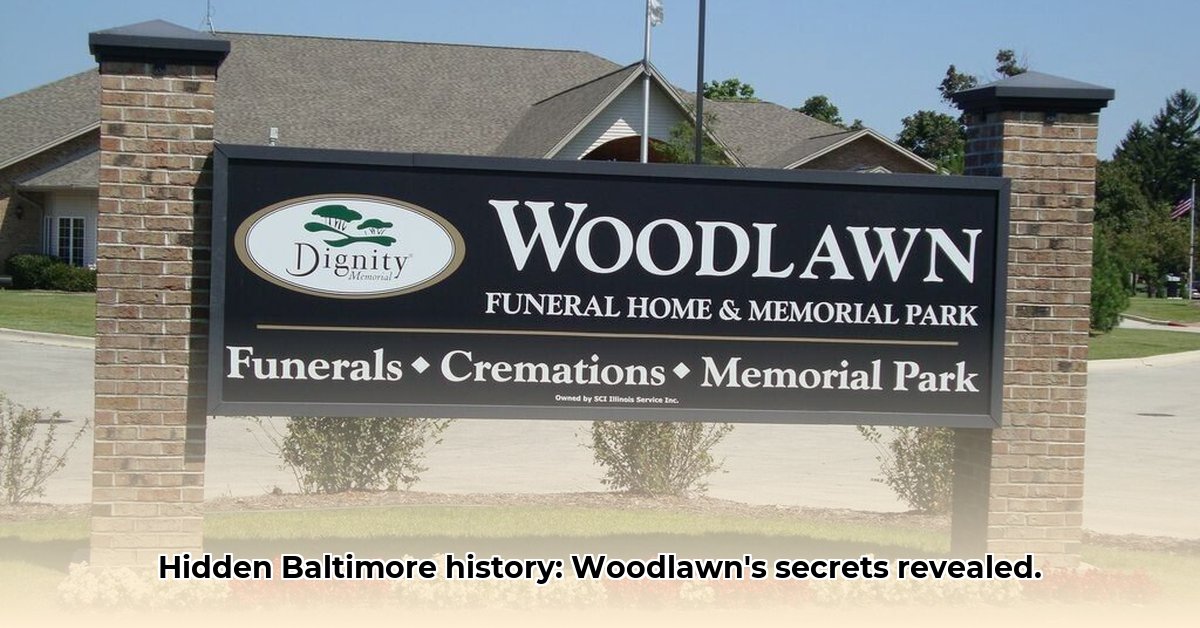
Woodlawn Cemetery, nestled in Baltimore, MD, is more than just a final resting place; it's a captivating historical archive, a silent storyteller whispering tales of Baltimore's past. Imagine a sprawling landscape dotted with thousands of headstones, each representing a life lived, a story waiting to be told. To truly understand this significant site, we must move beyond casual observation and employ a data-driven approach, piecing together fragments of information to reveal a richer, more complete narrative. This analysis utilizes publicly available data, primarily from Find a Grave, to uncover intriguing patterns and highlight the limitations of relying solely on user-contributed information. What secrets does Woodlawn Cemetery hold, and what can we learn from its digital footprint?
A Digital Tapestry: Exploring Find a Grave Data
Find a Grave currently lists over 19,000 memorials within Woodlawn Cemetery's boundaries. This substantial number immediately underscores the cemetery's historical weight and significance. However, a closer look reveals a striking disparity. Only about 36% of these memorials include precise GPS coordinates, a critical piece of information crucial for researchers and visitors attempting to locate specific gravesites. Furthermore, a concerning 61% lack accompanying photographs, hindering our ability to connect with the individuals memorialized. This incomplete data presents a significant challenge, leaving many stories untold and many lives less accessible to future generations. What does this disparity signify? Does it reflect societal biases in memorialization, unequal access to digital technology amongst different social groups, or simply the random limitations of voluntary contributions made to online databases? These are critical questions that require further investigation.
The incomplete nature of the data raises troubling issues. It poses questions about the completeness and accuracy of our collective memory, a memory increasingly dependent on online archives. How can we ensure that all stories, regardless of social standing or historical prominence, are captured and made accessible for future generations?
Key Findings: Unveiling Patterns and Limitations
Our analysis of Find a Grave data unveils several key patterns:
Incomplete Geographical Data: The absence of precise GPS coordinates for a significant portion of memorials presents a significant hurdle to researchers and visitors alike. This limitation directly impacts the accessibility and usability of the online database.
Lack of Visual Representation: The absence of photographs for approximately 61% of memorials limits our ability to connect with the individuals commemorated. Pictures enrich the narrative, adding a human element often missing in purely textual descriptions.
Potential for Bias: The discrepancies in data availability may reflect underlying biases in how individuals and groups are memorialized digitally. Further research is needed to explore potential correlations between data completeness and demographics, social standing, or historical significance.
These findings highlight the need for a more comprehensive and systematic approach to digital memorialization. The current reliance on user-submitted data leads to inherent biases and incomplete records, significantly impacting our capacity to understand and preserve this important historical site.
Actionable Insights: Steps Towards a More Complete Narrative
The limitations of the current data don't signal defeat; they highlight the need for proactive measures to enhance the accessibility and completeness of Woodlawn’s digital representation. We propose a multi-faceted approach:
Community Engagement: Launch public outreach programs encouraging families and community members to contribute photos, biographical information, and stories to existing online databases. This crowdsourced approach could dramatically increase the richness and completeness of online memorials.
Improved Digital Archiving: Work in conjunction with Woodlawn Cemetery to scan and digitize all official records, rendering them available for researchers and the wider community. This would create a comprehensive and reliable repository of information, complementing and enhancing the current user-submitted data.
Targeted Research: Conduct targeted research to investigate potential biases in the current dataset. This research could explore correlations between the availability of data and demographics or historical prominence, leading to a better understanding of the limitations of our current reliance on voluntary contributions.
Public-Private Partnerships: Secure funding through public-private partnerships to support the digitization of official records, the development of educational initiatives, and the expansion of research into Woodlawn's history.
Future Research: A Call to Action
This analysis serves as a starting point, not an endpoint. Future research should delve deeper into several key areas:
Comparative Analysis: A comparison of digital memorialization practices in other Baltimore cemeteries could provide valuable comparative data, highlighting shared trends as well as unique characteristics of Woodlawn.
Qualitative Research: Oral history projects, engaging descendants, local historians, and community members, would enrich our understanding of Woodlawn’s history by weaving personal narratives into the broader historical context.
Advanced Data Analysis: Utilizing advanced statistical techniques to explore correlations between demographic data and digital memorialization patterns will help unveil potential hidden biases.
Woodlawn Cemetery stands as a testament to Baltimore's past. By combining data-driven analysis with qualitative research and community engagement, we can transform this historical site into a vibrant and accessible archive for future generations, ensuring that the stories it holds continue to resonate for years to come. The journey towards a more complete and accurate digital representation of Woodlawn’s history is one that requires collaboration, dedication, and a commitment to preserving Baltimore's rich heritage.